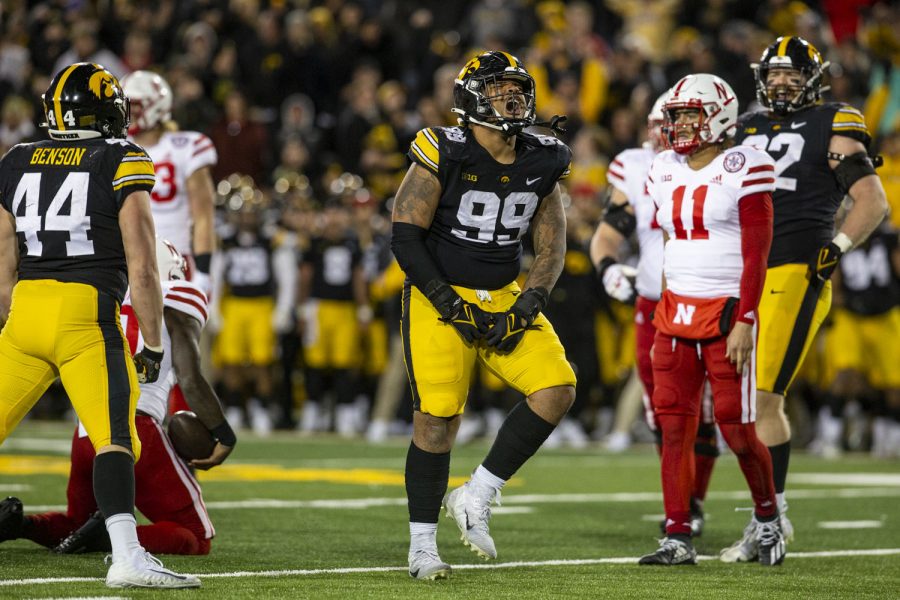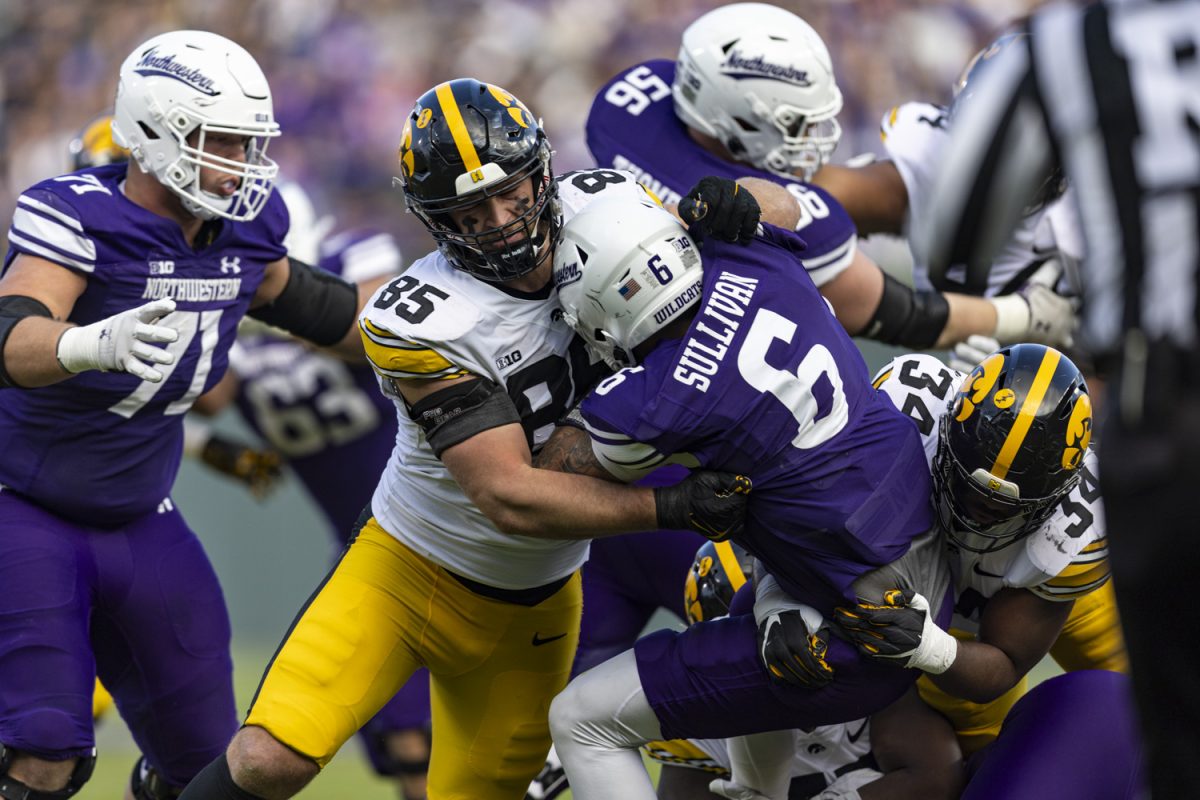Olympic wrestling trials in Carver-Hawkeye Arena
A statue of wrestling legend Dan Gable stands outside Carver-Hawkeye Arena. Thousands of fans gathered in April to pose for pictures with the figure before they filed inside to watch the country’s best wrestling.
Slightly more than 22,600 people attended the 2008 U.S. Olympic wrestling trials; that wasn’t enough. American wrestling was in a tough spot as it struggled to attract fans and sell tickets, and programs all over the country were falling apart or were killed completely. That’s why the U.S. trials committee decided to host the event in Carver-Hawkeye Arena this Olympiad.
USA Wrestling commissioners hoped holding the trials in the "Mecca of wrestling" would breathe life back into the sport and bring a few more wrestling fans into the venue. Gable himself said Iowa City could "make a difference" on the fate of wrestling in America.
It worked.
The University of Iowa sold 54,766 tickets. More than 13,000 fans packed Carver-Hawkeye for each of four sessions — even in the second period on April 21, which featured no Hawkeyes. Iowa City shattered every Olympic wrestling trials attendance record.
The athletes who hadn’t wrestled in Carver-Hawkeye before said it was a dream — that wrestling in front of a crowd so passionate was life-changing. The athletes who had seen the mats in Carver-Hawkeye before said it felt like coming home.
Wrestling fans saw some of the most powerful moments in all of American wrestling. Clarissa Chun became the United States’ first two-time Olympian in women’s freestyle wrestling. Henry Cejudo — the youngest competitor ever to win Olympic gold medal in wrestling — took his shoes off on the mat and retired at the age of 25. Rulon Gardner, the 2000 gold and 2004 bronze medalist, revealed a new healthy body that had lost 200 pounds. Ben Provisor made the Olympic team at 21 years of age. Ellis Coleman made it at 20.
The Olympics only come around every four years, and only once has the United States seen so many people ecstatic to watch 18 weight classes of wrestling for two full days. Wrestling is man’s oldest sport, but Iowa City brought something new to it this year — something special. Iowa City took a sport that was falling apart, packed 54,766 people into it, and let it start to grow again.
— by Molly Irene Olmstead
Iowa City as Big Ten title town
The University of Iowa hasn’t won any team Big Ten championships in the 2011-12 school year.
But this year, no town was home to more Big Ten championships than Iowa City.
The UI played host to four Big Ten championship events — men’s and women’s swimming, and men’s and women’s gymnastics.
Iowa City was painted with the colors of the 12 conference institutions during those four events — the Scarlet and Gray of Ohio State, the Maize and Blue of Michigan, and, of course, the Black and Gold of Iowa.
The championships all boasted down-to-the-wire finishes, memorable athletes, and of course, championship performances.
Michigan, Minnesota, Illinois, and Nebraska claimed the respective championships, and fans from the other 11 Big Ten towns left either the Campus Recreation & Wellness Center or Carver-Hawkeye Arena with a taste of Iowa City.
The reason Iowa City’s place as Big Ten title town is so notable is because no other university can boast three championship events, much less four.
Only Indianapolis, which has become the center of the Big Ten but doesn’t house a team, hosted four events. The only two Big Ten towns to host even two championships are Evanston, Ill., and Columbus, Ohio.
The four championships boasted an atmosphere unlike any other local event this year, but Iowa City shouldn’t get too used to being Big Ten title town. The 2012-13 schedule has only one conference championship coming to town — field hockey.
— by Ryan Murphy
Men’s tennis struggles
I thought the Story of the Year competition was no contest when I saw the list of candidates.
Only one team at Iowa completed a historic season this past year: the men’s tennis team. The Hawkeyes were supposed to feature one of its better teams in recent memory, but instead, they made up the worst edition in program history.
Iowa started the season 1-2 — it defeated George Washington at a neutral site — before losing its final 20 meets for a 1-22, 0-12 Big Ten finish.
The Hawkeyes weren’t just losing; they weren’t even close most of the time. Iowa scored two or fewer points in 19 of its matches and was shut out four times.
Seniors Will Vasos and Tom Mroziewicz, both of whom were to lead the squad because of their experience, posted a combined 4-28 singles record. Freshman Matt Hagan, who entered the spring having been named the Intercollegiate Tennis Association Missouri Valley Player of the Year in the fall, posted a 2-18 singles mark. Seniors Chase Beckert and Chris Speer combined with sophomores Jonas Dierckx and Michael Swank for a 6-27 singles record; Dierckx posted all six victories.
Add up all of the numbers, and the team finished with a 25-98 record overall in singles play.
Combine that with a 22-39 doubles record, and you’ve got yourself a historically bad season.
But just how historically bad was the season? The 2012 Iowa men’s tennis team (with a .045 winning percentage) beat out Don Klotz’s 1961 group that went 1-13 (.076) for the title of "worst in program history."
So let me ask you a question: What’s the better story? The men’s basketball team’s mediocre season that ended with a whimper in the NIT, or the men’s tennis team was the worst of all time?
The answer seems pretty obvious to me.
— by Tom Clos






